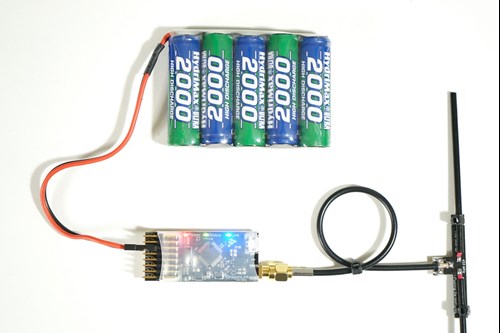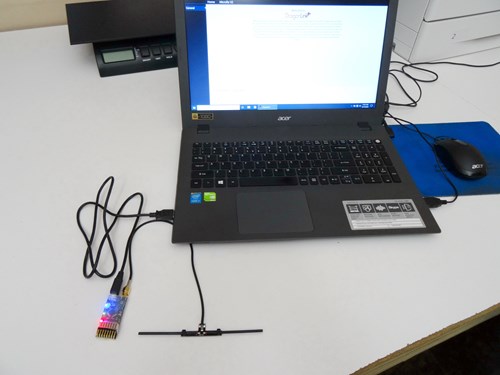
The Dragon Link system should have more range than the most FPV flyers will ever need. You should NEVER, NEVER get failsafes, glitches, or loss of control with the Dragon Link system. If you are not getting this kind of performance, then you need to do the steps in this guide to find out where the problem is. The most important thing to know about range problems is that they are almost always caused by something on the plane, or system setup. All Dragon Link equipment is tested for range before shipping and it is very rare to get a system that has poor range. This is actually good news for you, because this means that range problems can usually be solved by the user at home. If you need help beyond what is covered in this guide, we will be happy to help you !!! The help link is at the bottom of this guide.
IMPORTANT: If your Dragon Link is working properly, and you send a working system back for repair, a lot of time and money will be lost in shipping both ways. Sending a working system back for repair is NOT a quick and easy solution, because if you send a working system back to us, you will still have the SAME, EXACT short range problem to solve after you get your system back a couple weeks later :(
Short range in flight is almost always caused by other devices on the FPV plane or copter generating interference on the 433 MHZ frequencies the Dragon Link system is operating on. Another common cause of short range is improper installation of the Dragon Link Receiver antenna on your plane. There is a very easy step by step way to test for this. Do these tests in order, so that we can see where the system starts to fail in range testing.
CLICK HERE for a guide on how to install your Dragon Link Receiver Antenna on your plane or copter.
The Micro Power Range Test as described in the quick setup guide is the gold standard to test how much range your Dragon Link system will have.
The first question is, IS MY DRAGON LINK SYSTEM DEFECTIVE OR DOES IT HAVE POOR RANGE ??? Taking the Dragon Link system out of your plane, and doing a Micro power range test will tell you exactly how your Dragon Link system is performing, while removing all possible interference problems and variables in the plane itself.

MICRO POWER RANGE TEST OUT OF PLANE
1. Remove the Dragon Link Receiver and its antenna from your plane.
2. Put your RC transmitter with Dragon Link Transmitter on a table, or on a car hood, anything that puts the transmitter about 1.5 meters off the ground. Make sure that the Dragon Link transmitter antenna is vertical, with no objects blocking its antenna.
3. Power the Dragon Link transmitter on in MICRO POWER mode.
4. Power the Dragon Link receiver with a 5 - 8.4 volt battery as shown in the picture to the left. The goal here is to test the system when it is NOT powered by the planes BEC, as some BEC's can cause RF interference and short range. If you do not have a battery to power the receiver with, you can use the alternate power method as described in the next section below.
5. Hold the receiver and its antenna about chest high. Make sure the receiver antenna element wires are straight in their plastic tubes, and the antenna elements are HELD VERTICAL.
6. You should see a SOLID BLUE LED on the receiver, walk away from the transmitter until the BLUE LED on the receiver is quickly blinking on and off about 50 % of the time. In other words, the LED will be flashing quickly, but should be on about the same amount of time it is off. Do NOT stop walking at the first quick blinks where the LED is still mostly on.
7. A pass for this test is a distance of about 15 meters or 45 feet. Results will vary quite a bit based on a lot of things, so do not worry if your test is 5 meters different. A FAIL for this test would be any distance less than 10 meters, or 30 feet.
8. If you FAIL this test, CLICK HERE to do the RESTORE FACTORY SETTINGS to your Dragon Link system, and run this test again.
9. If you fail this test after restoring and rebinding the system, contact us in our support forum for help:

ALTERNATIVE MICRO POWER RANGE TEST OUT OF PLANE ( WHEN NO RECEIVER BATTERY IS AVAILABLE )
1. Power your receiver by using a USB cable and any USB power source such as a laptop computer as shown in the picture on the left. If you have a USB battery, or other device that can provide USB power even better !!! Computers can generate RF interference, so keep the Dragon Link Receiver and its antenna as far away from the computer as practical during test. Holding the receiver and its antenna a few feet away is far enough, nothing extreme is needed.
2. Do the MICRO POWER TEST outside of the as described in the section above.